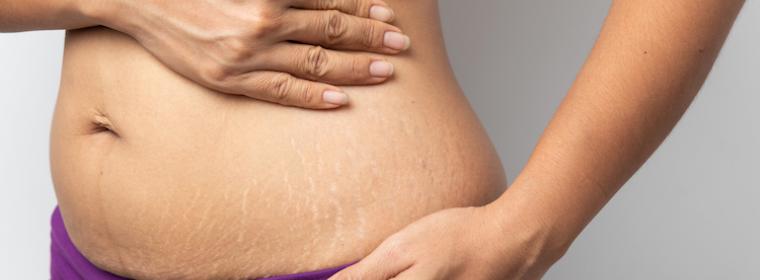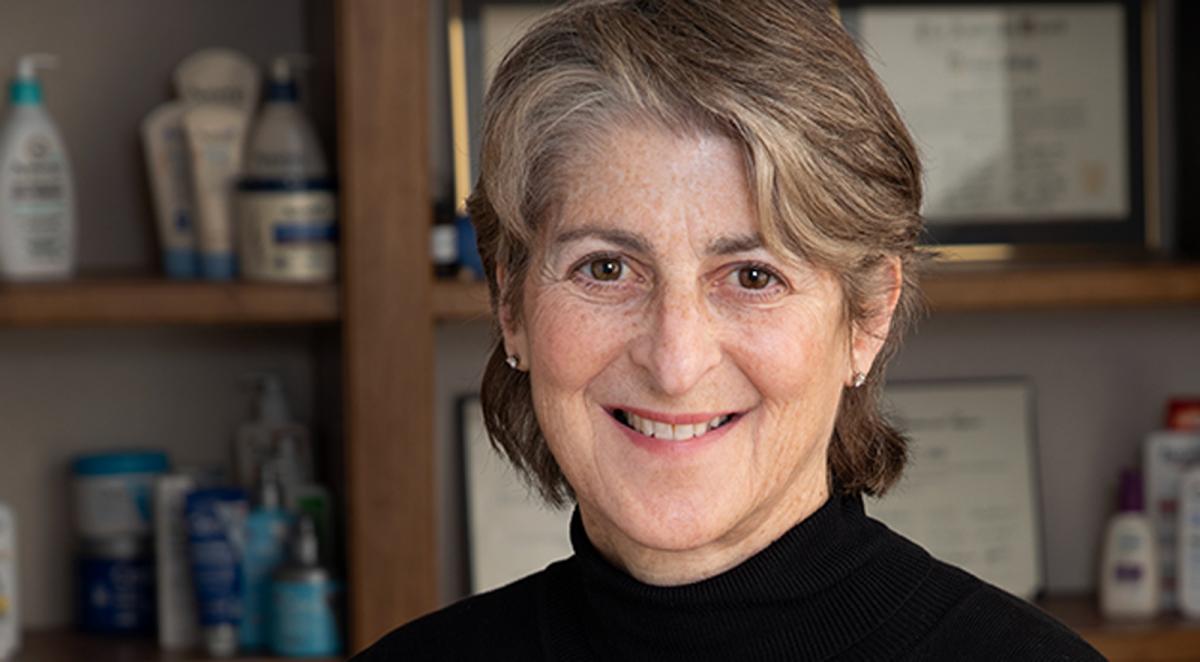
Stretch marks (striae distensae) are pink, red or purple indented streaks that most commonly appear on the abdomen, breasts, upper arms, buttocks, and thighs. They are not a significant medical problem but can cause emotional distress in those affected. Although they eventually fade to a white or gray color, it is rare that they completely dissappear.
Stretch marks are caused by a continuous stretching of the skin placing increased stress on the underlying connective tissue. Research published in the Journal of Investigative Dermatology shows that genetic predisposition increases the odds of getting stretch marks by 40%. Anyone can develop stretch marks, however, they are more prevalent in women than men. They are most commonly associated with:
- Pregnancy: a combination of skin stretching and hormonal factors induce stretch marks in most pregnant women.
- Weight gain: individuals who experience substantial weight gain, adolescents, especially during growths spurts, and weight lifters who rapidly increase their musculature can all develop stretch marks.
- Medication: chronic use of both oral and topical corticosteroids can induce stretch marks.
- Diseases: stretch marks may be a result of certain conditions that involve abnormal corticosteroid levels (Cushing's Syndrome and other adrenal gland diseases) and certain genetic conditions that weaken elastic tissue (Marfan's Syndrome or Ehlers-Danlos Syndrome.)
Stretch marks are mostly a cosmetic concern as the majority of them fade over time. Various creams, lotions and therapy options exist but none have proven to be more beneficial than any other, and, little scientific data exists proving 100% efficacy for any of them.
Prescription Vitamin A derivitives, like tretinoin cream, may improve the appearance of stretch marks that are relatively new (less than a few months old) but it is not recommended for pregnant or nursing women. Tretinoin cream can be irritating and has not been shown to be effective for older stretch marks.
Several laser therapies are used to help rebuild the underlying collagen and elastin, but again, few are 100% effective and treatments are often very costly.
Microdermabrasion is used to gently remove the top layers of skin with the hopes of stimulating underlying collagen formation. Again, little scientific evidence exists showing efficacy of this treatment modality.
Creams that contain Vitamin E, fruit acids, olive oil, botanicals, and other extracts are often touted as stretch mark treatments. Although these products will not likely cause any harm, there is little science-based research showing that these products are effective
The best treatment (although still not perfect) for stretch marks is prevention. Maintain a constant healthy weight. During pregnancy, moisturize the skin twice a day to maintain adequate skin hydration, optimizing skin elasticity and strength, eat well, and exercise.





